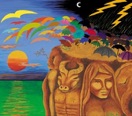
References
-
Altamirano, Teofilo (1990) Los Que Se Fueron: Peruanos en Estados Unidos. Lima: P.U.C. Press.
-
Berg, Ulla (2008) In Defense of Community? Long-Distance Localism and Transnational Political Engagement Between the US and the Peruvian Andes. Journal of Ethnic
-
and Migration Studies, 34(7): 1091-1108.
-
Berg, Ulla and Carla Tamagno (2006) Quinto Suyo From Above and From Below: State Agency and Transnational Political Practices Among Peruvian Migrants in the US and
-
Europe. Latino Studies, 4(3): 258-281.
-
Gelles, Paul H. (1993) Transnational Fiesta: 1992. Teaching Notes. Berkeley: Berkeley Media.
-
Gelles, Paul H. (1992) 'Caballeritos' and Maiz Cabanita: Colonial Categories and Andean Ethnicity in the Quincentennial Year. Kroeber Anthropological Society Papers. Nos
-
75-76, Oakland: GRT Press.
-
Glick Schiller, Nina (1996) Peru and the Potomac as a Single Social Space. A review of Transnational Fiesta: 1992. American Anthropologist, 98(1): 146-150.
-
Himpele, Jeffrey (1995) Transnational Fiesta: 1992 Film Review. Visual Anthropology Review, 11(2): 107–109.
-
Paerregaard, Karsten (2008) Peruvians Dispersed. A Global Ethnography of Migration. Lanham: Lexington Books.
-
Paerregaard, Karsten (1997) Linking Separate Worlds: Urban Migrants and Rural Lives in Peru. Oxford: Berg.
-
Urban, Greg and Joel Sherzer (1991) Nation States and Indians in Latin America. Austin: University of Texas Press.
-
Walker, Charles (1988) Los Peruanos en los EE.UU.: El Caso de Chicago. Quehacer. Lima.
Transnational Fiesta 1992
10 min. clip
For more information, please visit Transnationalfiesta.com
To purchase this film, please contact Documentary Educational Resources
Cabanaconde is a large peasant community of about 4,000 people located at 10,700 feet above sea level in the Southern Andes of Peru (see map below). Cabaneños are relatively prosperous compared to neighboring communities in the Colca Valley and other parts of the Arequipa region, with an economy based on the well-known "Cabanita" maize as well as herding, commerce and tourism. Cabaneños are also travelers--even before the road reached the community in 1965, Cabaneños had already established migrant colonies in the cities of Arequipa and Lima. They started arriving to the Washington D.C. area in the early 1970s. By the time the video was shot, in 1991, the Cabaneño migrant community there numbered around 250 and was organized in the Cabanaconde City Association (featured in the video).
As part of this migrant community, the Quispe family includes the two parents (Teodocio and Julia), five of six of their children, several in-laws, and numerous members of the extended family, most of whom travel often to Cabanaconde. As the sponsors or toreros of the 1991 patron saint fiesta, dedicated to the Virgin of Carmen, Teodocio and Julia Quispe invested significant amounts of money, time and resources to fulfill this once-in-a-lifetime, honorary obligation. The five-day celebration included almost non-stop brass band music, dancing, ritual and religious events (both Catholic and Andean), bullfighting and food and drink invitations to the entire community.
The fiesta was unique because it was the first time it was sponsored by a migrant family, whose members were accompanied by various North American relatives and visitors. The celebration not only condenses the transnational nature of the community but also becomes a symbol and a metaphor for the many crossings and transpositions of national, ethnic, family and identity "borders." The video also follows the Quispes to their homes in the U.S. where they reflect back about the fiesta, their interethnic marriages and about their multiple identities (Cabaneño, Inka, Peruvian, Latin American, American).
The video uses an impressionistic montage style as a way to capture and convey the constant juxtapositions and constructions of nation, community and selfhood that take place in transnational contexts.
Muestra Internacional de Cine Etnológico, 1996 (Spain | Margaret Mead Film Festival, 1994 (New York); Chicago Latino Film Festival, 1994 (Chicago); National Educational Film and Video Festival Bronze Apple Award, 1994 (California); Dreamspeakers Film Festival, 1994 (Canada); International Congress of Anthropological and Ethnological Sciences, 1993 (Mexico); Suffolk Film and Video Festival Award, 1993 (New York); American Anthropological Association Film & Video Festival, 1993 (Washington, D.C.)
Directed by Wilton Martinez / Production: Wilton Martinez & Paul H. Gelles
Research: Paul H. Gelles / Camera & Editing: Wilton Martinez
Sound: Francisco Amasifen & Paul H. Gelles
Post-production: Center for Visual Anthropology at the University of Southern California
Distributed by Berkeley Media / Duration: 61 minutes
This video is recommended for teaching about subjects including:
transnational migration
multiculturalism and diversity
ritual and symbolism
religious syncretism
interethnic marriages
Andean culture
Latin American studies
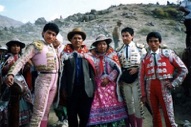
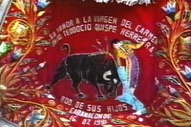
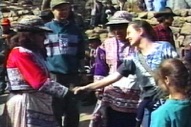


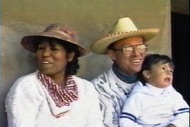
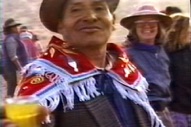

This award-winning film documents the lives of the Quispes, a family of Peruvian Andean immigrants living in the Maryland/DC area, and follows them to their home town in Cabanaconde, Arequipa, as they return to sponsor the annual patron saint fiesta. Other migrants as well as North American members of the Quispe extended family, also participate in the fiesta, where the complexities of cultural identity, transnational migration, religious syncretism, and interethnic marriages all converge. (continues below)
Documentary
Advocacy
Creative
EthnoVisions
